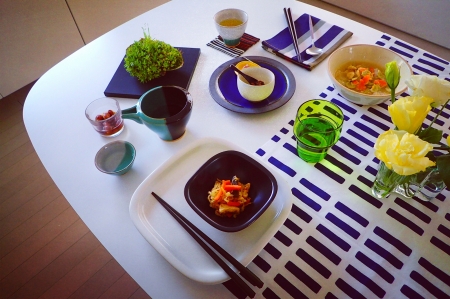区別して限定
日常の暮らしの中で建築を考えていくと、どこか使い手に迎合してしまう印象がつきまとう。
使いやすさとか、趣味とか、居心地良さとか、気持ち良さとか、それは人それぞれ違うから、それを追い求めると使い手に合わせることになるし、建築は設計者自らの自由裁量でとはいかず、事業として成り立つようにクライアントがいて、設計者はそこではじめて登場するから、建築のことだけを考える訳にもいかず、だから、上手いこと暮らしと建築を切り離して、暮らしは取り扱わず、それは見て見ぬ振りをして、建築のことだけを語る方が作品になる。
ところが、面白いことに、建築のことだけを取り扱っているのは設計者だけで、設計者以外は建築と暮らしを区別していない、というか区別できない、だから、暮らしの中で交わされる言葉を使って設計者とクライアントはコミニケーションをするので、結局は迎合してしまう。
ならば、建築と暮らしを区別せず、日常として一緒に扱えば良いと普通に思うと、今度は日常と非日常の区別をするようになる。その区別はわかりやすく、利用しやすい。
結局、区別して、範囲を限定することによって、その範囲内で自由にやろうということで、建築を担保しているのだなと思う。
"Limited distinction"
When you think about architecture in your daily life, you will always get the impression that it will suit you.
Ease of use, hobbies, comfort, comfort, etc., are different for each person, so pursuing them will suit the user, and architecture will not be at the designer's own discretion, but will be a business. Because there is a client and the designer appears there for the first time, it is impossible to think only about architecture, so it is a good thing to separate living and architecture, living is not handled, it is pretended to see And the one who talks only about architecture becomes a work.
Interestingly, however, only architects deal exclusively with architecture, and non-designers do not distinguish between architecture and living, or indistinguishable, so we use the words exchanged in our lives. The designer and the client communicate, so they end up being compliant.
Then, if you normally think that it should be treated as everyday without distinguishing between architecture and living, then you will distinguish between everyday and extraordinary. The distinction is easy to understand and easy to use.
In the end, by limiting and limiting the scope, I think that the architect is secured by trying to be free within that range.

